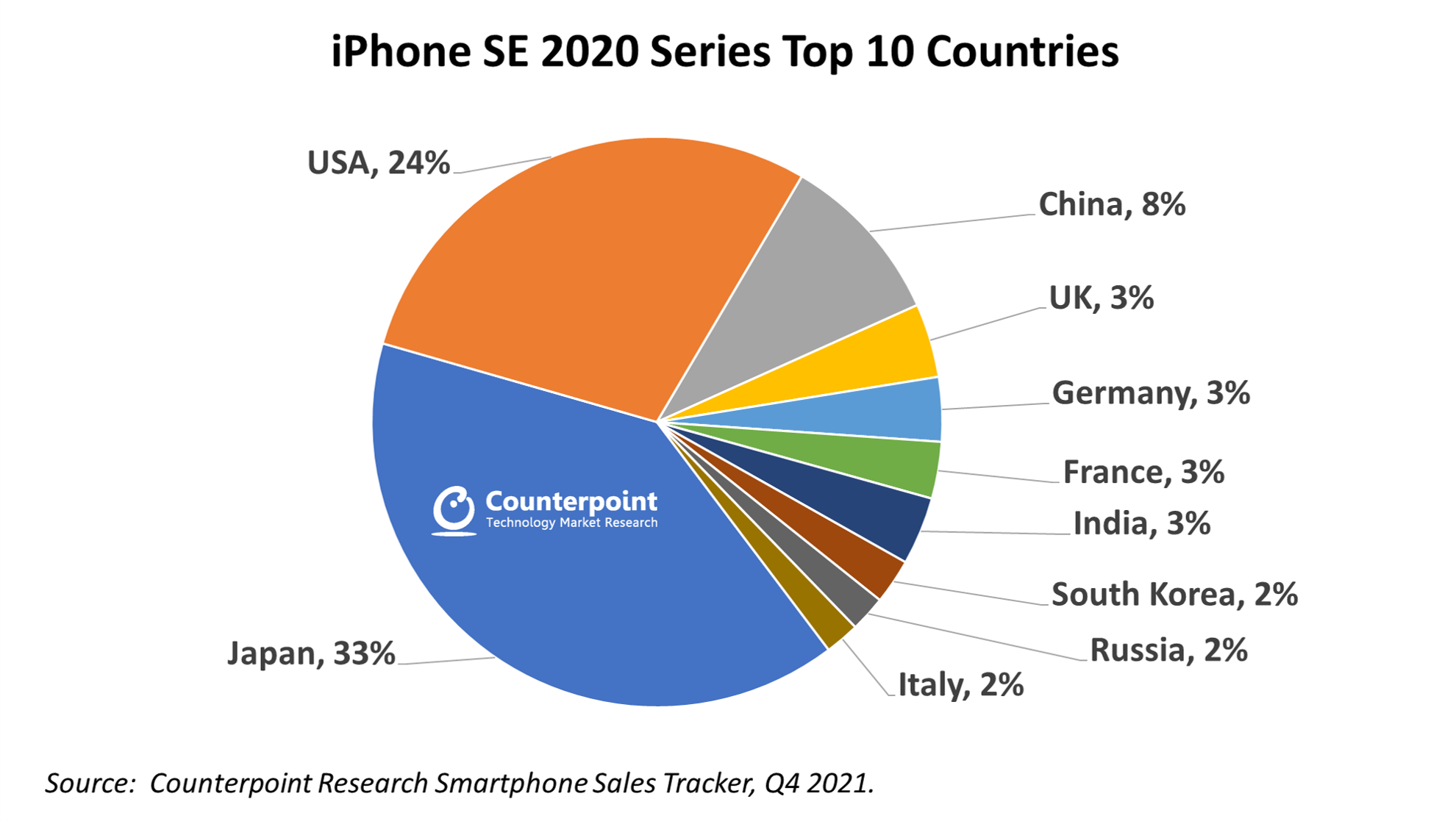5G
New iPhone SE 5G to open up more mid-end segments
Apple just announced its new iPhone SE smartphone at its online Peek Performance event. The new device will be more expensive than its predecessor but comes with a more powerful A15 Bionic processer and 5G network support.
Despite the bigger $429 price tag, the updated iPhone SE is expected to do well, with 5G network support now bringing it in-line with key competitors across the mid-end segment.
According to Counterpoint Research’s Smartphone Model Share Tracker, Q4 2021, the 4G iPhone SE 2020 accounted for 12% of Apple’s total iPhone unit sales from its launch in Q2 2020 to Q4 2021 – with Japan and US the biggest markets for the device globally.

“The iPhone SE has been a solid mid-segment performer for Apple, with the 2020 version accounting for 13% of overall sales during its launch year in 2020,” states Jeff Fieldhack, research director of Counterpoint’s US practice. “It’s continued to have fantastic longevity with the device appealing to both new iOS users looking to upgrade from budget Android or iPhone owners replacing iPhone 8 (or older) devices, which this new SE body is based around.”
Sujeong Lim, senior analyst, Smartphones, highlights the importance of key regional markets to the success of the new 5G enabled device, noting, “Developed markets like Japan will be critical to the success of the new iPhone SE, where one-third of all 2020 SE models have been sold – and, of course, stalwarts like the US and China which accounted for another third of unit sales will be big drivers.”
“But this time, we expect demand to open up more across other markets like Europe, SE Asia and Korea – regions where many consumers stayed away because of the lack of 5G support.”
“The pricing is a slight surprise to the upside, but it shouldn’t be considering the chip upgrades coupled with recent events only intensify short-term supply chain risks,” observes senior analyst Ivan Lam. “I think they had room to move, especially with supply issues hitting lower-end components like 4G chipsets much harder than 5G, but this is a solid device with a long runway.”
Jeff Fieldhack notes, “The A15 Bionic supports all current services and others to come for the foreseeable future, so they can run this device for years with only slight tweaks or upgrades. And the higher starting price doesn’t just mitigate short term risk, it gives them extra padding to drop prices tactically in tandem with new 5G launches and as the product ages.”
CT Bureau















You must be logged in to post a comment Login